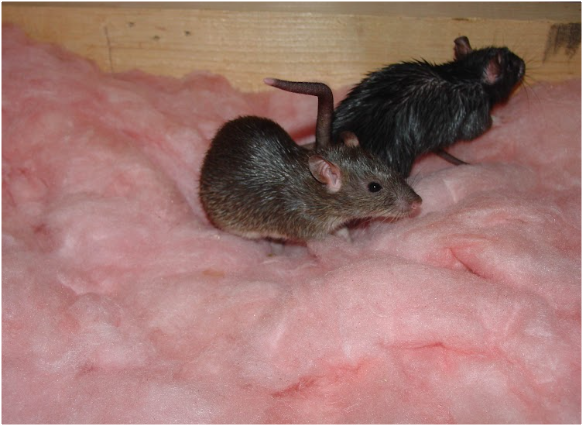People can appreciate wildlife and still find it unpleasant when it winds up on their property or, worse, inside their attic spaces. Rodents are notorious for finding small entry points and taking up residence in one of the darkest and quietest places in the home, which is why prevention is so important. Rat removal in Pickering focuses on securing your property and adopting habits that will keep the rodents at bay.
4 Ways To Prevent Rats in Attic Spaces
Rats, like most animals, want to find a safe and reliable place to stay. A place that provides access to food and water. A home that offers enough room for their colony. Unfortunately, a residential property can supply every need the animal has. Thankfully, homeowners can focus on four preventive strategies to ensure their houses remain rodent free.
1. Seal Any Cracks or Holes
While it is easy to look at your home and assume it is an impenetrable fortress, it actually has many vulnerabilities, especially for an animal that can squeeze through a 20 mm opening or possibly smaller in optimal conditions. As humans, it is difficult to comprehend how flexible rats are, so it is easy to underestimate them.
To protect your home, you need to walk the exterior and look for any gaps, cracks, or holes along the foundation, walls, roof, etc. Whenever you find an opening, seal it. However, if you suspect you already have rats in your house, sealing potential entrances is a mistake because you will also seal the exits, trapping the rats inside.
2. Ensure Trees Are Trimmed Away From Home
Before you have to worry about how to remove rats from the home, it is essential to do everything in your power to prevent them from entering. Many people do not picture rats climbing trees, but they are actually excellent climbers known to jump from branch to branch.
If you have trees close to your roofline, make sure to keep branches trimmed back. You want to create a space of about 5 ft between the house and the nearest branch.
3. Store Garbage in Tightly Sealed Bins
Rats are opportunistic eaters, meaning they will eat whatever they can get their paws on, including trash. Purchasing trash cans with tight-fitting lids is not only a good idea to keep rats away but also to prevent other neighbourhood wildlife from becoming too comfortable around your home.
Food is one of the biggest motivators for wildlife. Anything a homeowner can do to limit access to potential food sources is a win in the prevention category.
4. Keep Piles of Debris or Wood Away From Home
Rodents, especially rats, love hiding places. Piles of debris, yard waste, or wood are all excellent hiding places. If you must have piles of debris around your property, keep them away from your house. The closer the piles are to your home, the more motivated an animal is to explore the house and its foundation, potentially locating an access point.
Vulnerable Areas Around a House
As you learn how to get rid of rats, you will come to understand the more vulnerable areas around your house. Rats will take advantage of plumbing lines, wiring, wall gaps, and vents; each offers a potential highway or way into your home. Be vigilant and protect these spaces.
Do you have a rat problem? Contact Skedaddle Humane Wildlife Control and request a property inspection. The service can send a team to assess your property and look for signs of rodents. If they find signs of an infestation, the team will make suggestions and provide an estimate for potential services.



